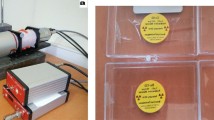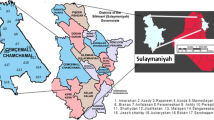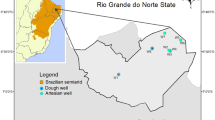Summary
In the last years the interest in drinking and mineral water radioactivity has grown. Recently national and EU regulations replaced the previous drinking water norms with the aim to strengthen consumers security concerning drinking water quality. Perugia and Urbino Universities carried out a joint study on the radiological characterization of the water destined for human consumption in the Umbria region. The aim of this work was to produce a map of the radon and tritium concentrations in the water of this area as a basis for the implementation of hydrogeological knowledge and to determine a possible related radiological risk for the local population.222Rn measurements were performed by liquid scintillation and gamma-spectrometry and3H measurements by liquid scintillation. Up to now, the222Rn concentrations ranged 5.9-65.79 Bq/l and3H concentrations are always lower than the detection limit (8.6 Bq/l).
Similar content being viewed by others
Author information
Authors and Affiliations
Rights and permissions
About this article
Cite this article
Borio, R., Rongoni, A., Saetta, D. et al. Radon and tritium measurements in drinking water in a region of central Italy (Umbria). J Radioanal Nucl Chem 266, 397–403 (2005). https://doi.org/10.1007/s10967-005-0923-2
Issue Date:
DOI: https://doi.org/10.1007/s10967-005-0923-2




